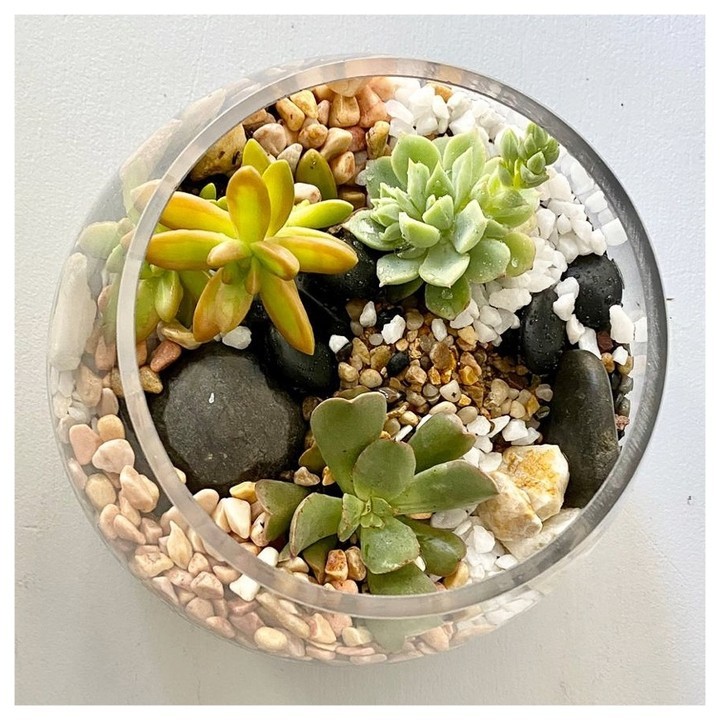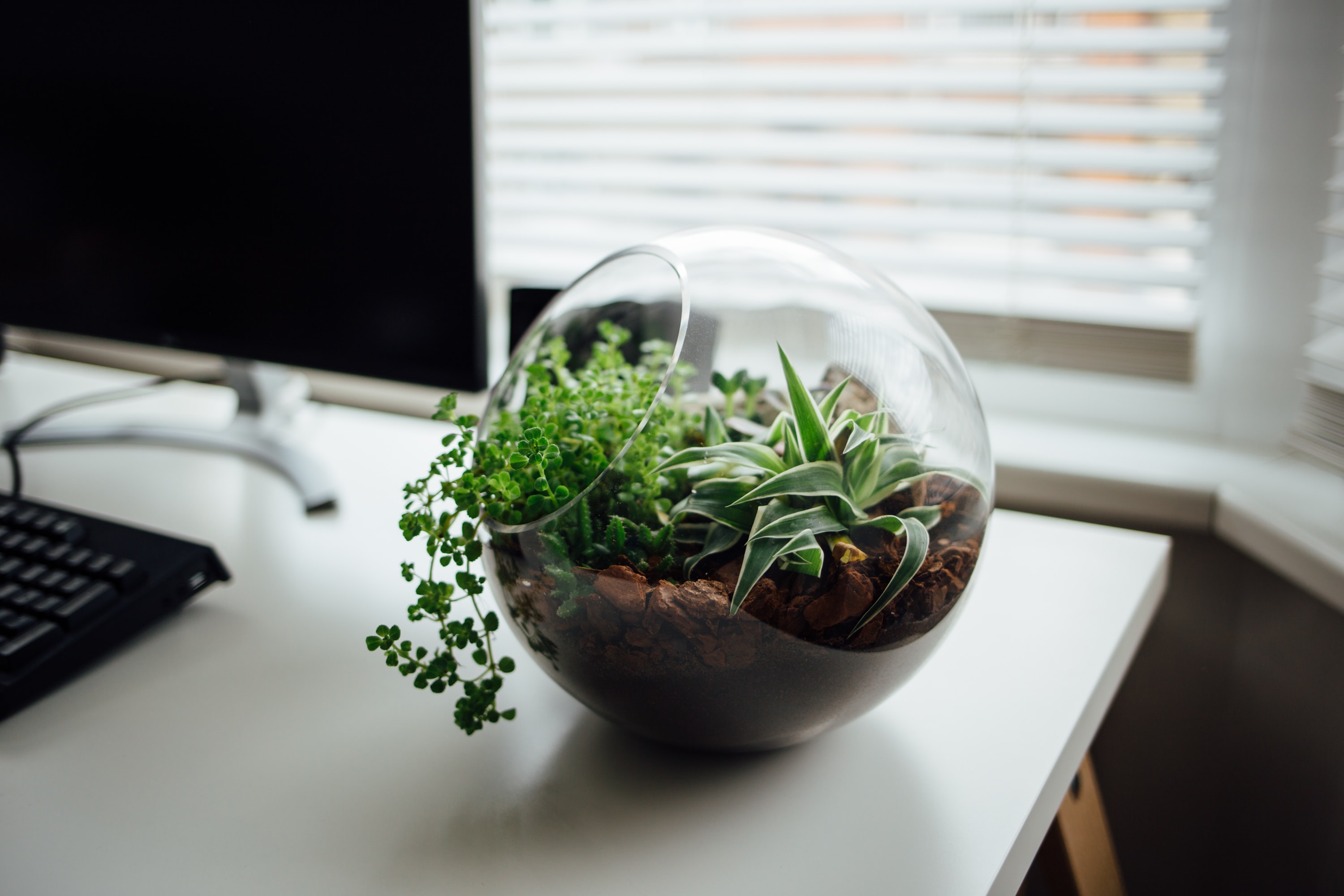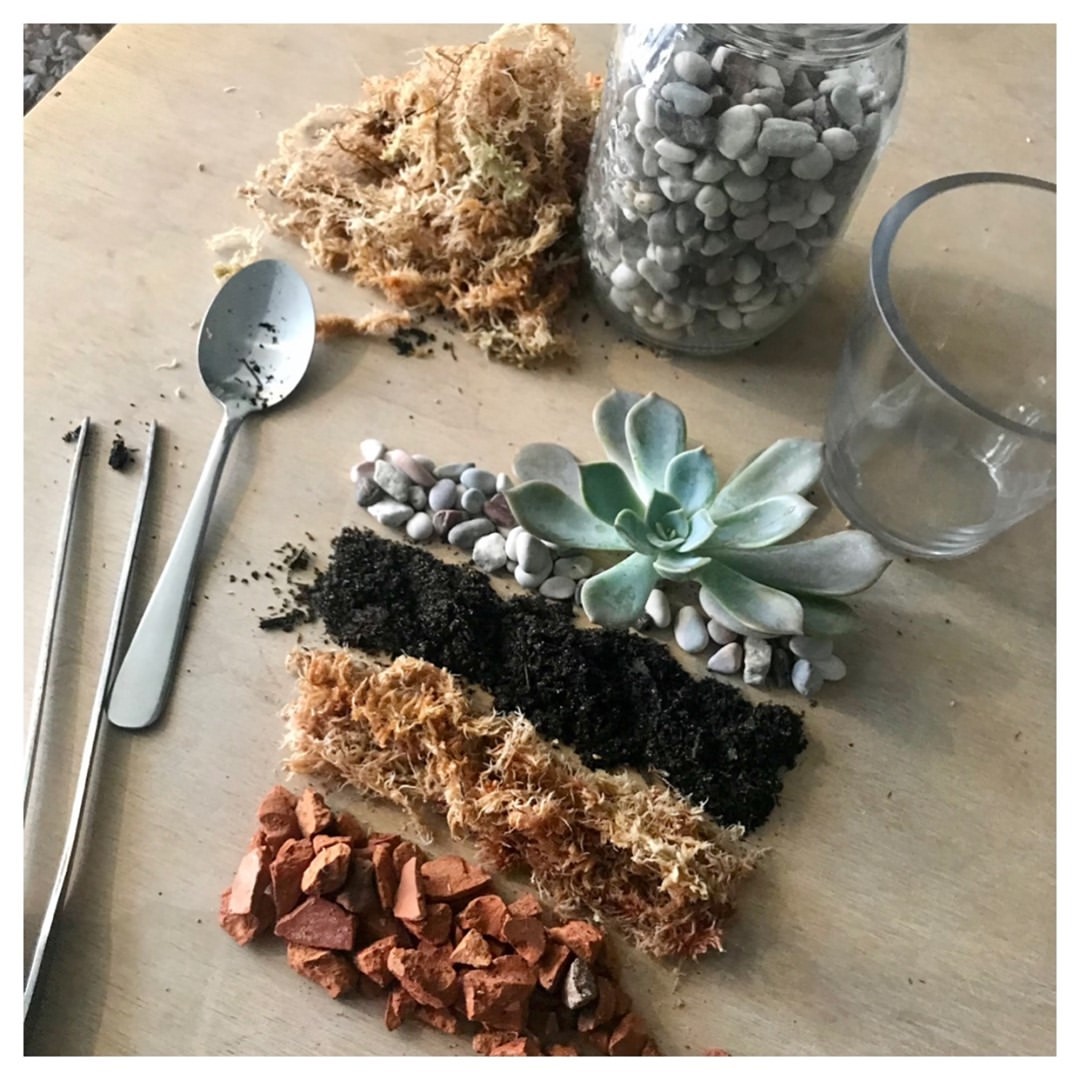
We have had the pleasure of hosting hundreds of students in our terrarium workshops in the Merchant and Green studio over the past five years, under the expert tutelage of Creative Director Chris Saban and his team. And, for many people who love to create these miniature environments, the first terrarium is certainly not the last.
Terrariums - glass vessels holding a selection of petite plants, special soil, moss and decorative elements - are wonderful to have indoors and are long-lasting with a little care. We’d like to share with you a few key tips, to help you keep your terrarium happy, healthy and green.


Two types of terrariums – dry/arid and wet/greenhouse
Terrariums are largely self-sustaining microclimates, and they can be distinguished by the type of environment they’re inspired by.
Dry/arid styles feature plants such as cacti and other succulents, often surrounded by stones, and are reminiscent of a desert landscape. Characteristically in an open glass vessel, they need little water and enjoy natural airflow.
Wet/greenhouse styles, in contrast, remind you of a rainforest, and can feature plants such as ferns, spider plants and miniature pothos, to name just a few; moss often features too (image top right is a mossarium, to be precise!), in systems that are more often in an enclosed cloche or glass lidded vessel. In this closed style, humidity is created, condensation collects within the terrarium, gathers on the glass, and is then re-absorbed by the soil, for the plants to utilise again as they grow.
Which plants to choose
The type of terrarium - dry or wet - will guide your plant choice as you design your landscape. As succulent and tropical plants thrive in different environments, it’s best not to mix these two families in the one vessel.
Choose plants that aren't too large - you don't want the plants to be cramped or pushed close to the glass - and be mindful of how the different proportions will work together in your chosen vessel. Chat to the team in your plant store or nursery for additional guidance as you're narrowing your selection and if you need a little advice.

Light
In selecting the location for your terrarium indoors, a bright position is best, away from direct sun. Glass can amplify heat and light, so direct sunlight can mean the temperature is higher than what’s best and plants can get burnt.
Wipe your glass regularly with a damp soft cloth – this will remove any dust and allow light to evenly reach your plants. It's also a good time to take a moment and note if there's any maintenance that might be required. Note if your plants are growing in one particular direction toward their light source, and rotate your terrarium as required.
Water
As terrariums don’t have drainage holes at the bottom of the vessel, best to water with a little restraint as you get to know your ecosystem. Water left sitting at the base of the terrarium will mean roots are more likely to deteriorate; a drainage layer such as sand or small stones at the base of your terrarium will assist.
For dry/arid styles, add a little water once a week when the soil is dry. In cooler weather, a little less, depending on the overall temperature of your home or office. A plant mister can be helpful as you get accustomed to your plant collection and how much water they need.
For wet/greenhouse styles, the closed loop should be ample to sustain the moisture requirements for your plants. If it seems a little too wet, open the vessel for a few hours to increase airflow and release some of the collected condensation.
Observation is always an important part of the process – your plants will let you know if they’re struggling. Shrivelled leaves on your plants means it's time for a water. If leaves are brown and mushy – there’s a little too much.

Tools
The right tools are really helpful to allow you to maintain your terrarium. We recommend a kit of three items – all with long handles to more easily reach into your terrarium to make it super easy and minimise disturbance: tweezers, miniature scissors and a rake, to move aside any stones and peddles as you work. A spoon will certainly be helpful too. Make sure they're clean for each use, you can wipe with a little sanitiser if you like before you begin.
Replacing plants
Terrariums are generally made of a collection of plants and if any one of them becomes unwell or reaches its natural end, it’s best to remove and replace, so as not to impact the entire system. This allows you to continue to keep the entire group healthy. It's also a chance to develop the style of your collection – perhaps add a plant with a different leaf colour or introduce a change in plant shape, to see how that suits your evolving landscape.
Finally, enjoy.
Terrariums can become a wonderful hobby and practice, as we continue to bring living elements into our homes and work spaces. They offer a level of serenity and mindfulness as we care for their environment.
Talk to the team at Merchant & Green if you'd like any further advice or guidance in keeping your terrarium looking its very best. We also offer a maintenance and replanting service from our Redfern studio. And if you're just starting out with terrariums and would like to come along to one of our workshop experiences, head to the link below for all the latest dates.
www.merchantandgreen.com.au/workshops
As your botanical lifestyle store, we're always happy to help.
